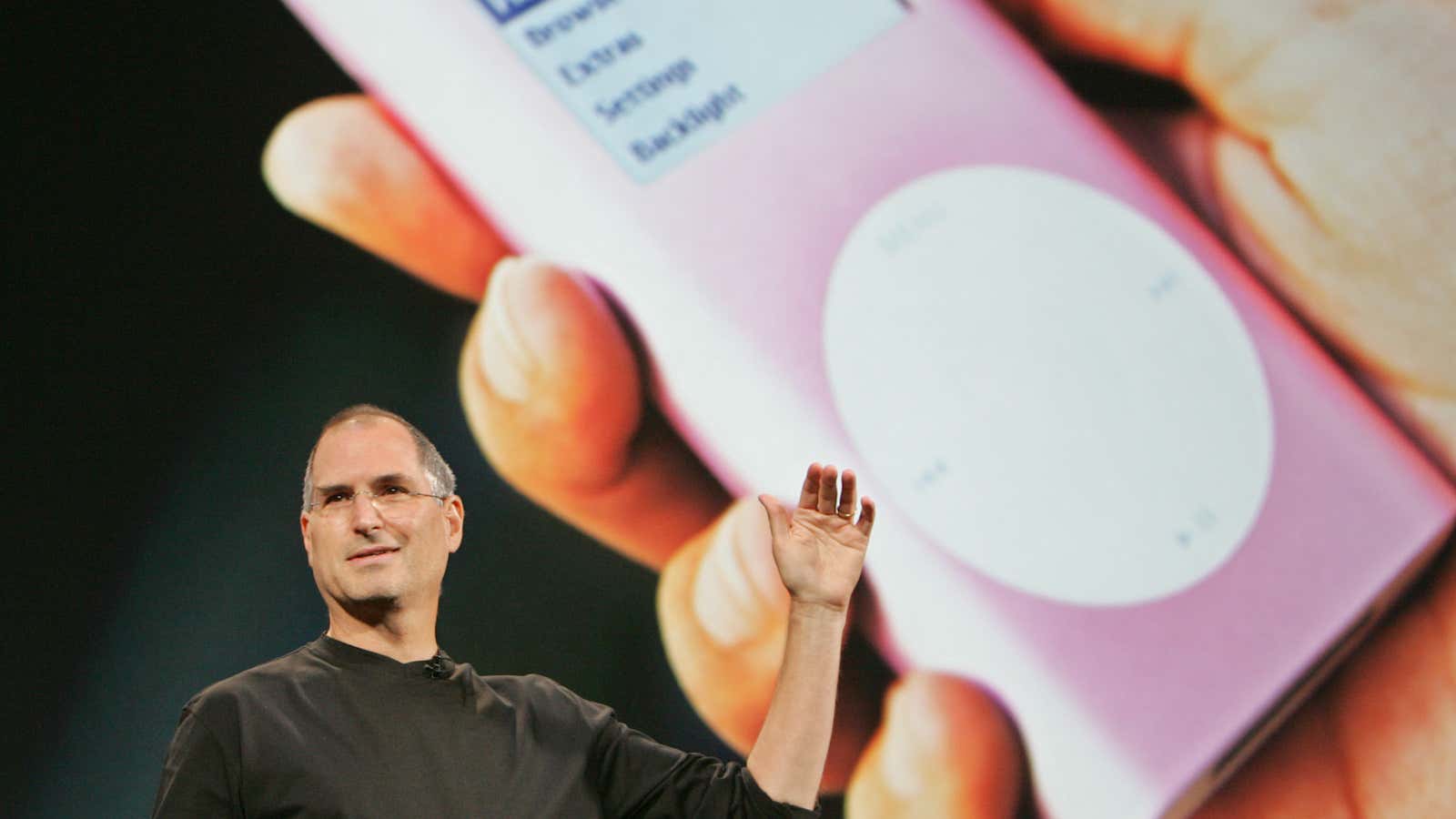On April 28, 2003, Apple started up a revolution.
Enter the iTunes Music Store, unveiled with a proud flourish by a beaming Steve Jobs. It was a digital jukebox, a music distribution game-changer, a record store to end all record stores—and it did, in fact, kill off a great number of those. The addition of the online store to the iTunes media player (which debuted in 2001) completely altered the way people bought, sold, and made music around the globe.
This new iTunes store delivered content to impatient fans instantly. Its option to purchase individual songs made music insanely cheap. It proved so popular, it convinced even the most stubborn of artist holdouts to sign up. Sure, the record industry certainly had its gripes with the service, but listeners loved it. By 2013, Apple had sold 25 billion songs.
So why this?

For 13 years—15 if you count the two years the program was just a file-storing service—users have grumbled loudly about iTunes’ unwieldy interface, its bloated features, its inability to simply get better. Companies, however great, sometimes fail to improve their products; and iTunes has been Apple’s great big software mess-up. (Well, that and Maps.)
There’s one more thing
In 2003, Time magazine praised iTunes as a ”disarmingly simple concept” and the “coolest invention” of the year, neither of which would remain the case for long.
The iPod, the iPhone, the MacBook were all iconic pieces of technology when they debuted, and they’ve only grown sleeker with every iteration. With iTunes, we’re now on version 12—but aside from a flattened UI and a few touch-ups to the color palette, things look pretty similar to what they did in 2003.

That’s largely because, instead of trying to streamline the service over the years, Apple has opted to stuff an overwhelming number of new features—movies, television shows, podcasts, mobile apps, and most recently, Apple Music—into it. The company gave its designers “an impossible task: cramming way too much functionality into a single app,” says Marco Arment, the software developer behind Tumblr and Instapaper.
As a result, Arment says, the platform has turned into a ”toxic hellstew of unreliability.” The most widespread grouses about iTunes today include, but certainly aren’t limited to:
- Its space-sucking size. iTunes’ storage requirements go far beyond the size of the actual music files it hosts.
- Slowness. Thanks to its massive set of features, iTunes is jerky and inclined to lag.
- Ugliness. From a design standpoint, the navigation of iTunes is unintuitive, perplexing, and downright unattractive. Its ubiquitous shade of lint-dull gray does not help.
- Bloatware. iTunes updates tend to come with bulky extra components that both take up space and complicate security.
- Lack of online or social integration. Of course, Apple did try, kind of—remember the disaster that was Ping?
- A wonky back-end. Considering it’s meant to be a file management service, iTunes probably shouldn’t require so many articles on how to manage files on it.
- Music isn’t even its priority. iTunes is not really the music player it claims to be; it’s focused on selling apps, books, and other content. With so much attention on the store, Apple has shoved the improvement of actual music-related features to the side.
Honestly, why bother anymore?
While you’d think consistent years of hatred would be enough to spark change, the fact is that Apple has never felt an urgent need to whip iTunes into shape because it knows people will grudgingly use it no matter what. As long as people buy music and buy iPhones (and they are, at record rates), they have little choice but to store that music on iTunes.

But that’s now changing.
“The money has moved from owning to listening, [so] the company is trying its hardest to make sure they can capture as much of that transitioning market as they can,” technology columnist John Patrick Pullen observed in June 2015, right after Apple revealed Apple Music, its subscription streaming service.
That service has proven an excellent gamble; Apple Music—only 10 months old—now already has 13 million paying subscribers. In 2011, App Store downloads overtook iTunes music downloads and the years since have seen iTunes’ music profits falling and falling. It’s a reflection of a certain inevitability: the industry is moving on.
At the same time, Apple is quietly shuttering key iTunes features. Its last iTunes update, from March 21, was only a single line long: “This update adds support for syncing iTunes with iPhone SE and iPad Pro.” (Editor’s note: That syncing could still use some work. The last time I tried to connect my iTunes music library to iCloud, it tried to upload to my entire music collection to my phone—2,000 songs at a time.)
A recent report from the Recording Industry Association of America highlighted how streaming is currently the largest revenue-driver in the US music industry.
Apple, in its post-Jobs era, seems to have also given up on revamping its old products, choosing to follow current trends instead of pressing on its prior innovations. So perhaps the fate of iTunes is to be ignored until it dies, unloved, in the corner, long after people forget just how revolutionary it was.
Streaming is now so accessible and convenient that it’s made the world grow tired of downloading and owning music—just like iTunes’ 99-cent song downloads years ago turned physical record stores into dusty mausoleums.
